|
HOME: www.hiltonpond.org |
|||
THIS WEEK at HILTON POND Subscribe for free to our award-winning nature newsletter (Back to Preceding Week; on to Next Week) |
11-19 Nov 2017 & 20-28-Jan 2018 Come be part of a real |
JUNE REPTILES AT HILTON POND As long as the weather's warm, reptiles can be seen in all seasons at Hilton Pond Center--our turtles come out to sun on warm February afternoons and we've even seen snakes slithering about on Christmas Day--but these scaly creatures seem especially active in early summer. Such was the case this June when strolls around our nature trails revealed an abundance of reptilian activity.
All text, maps, charts & photos © Hilton Pond Center By far the biggest reptile spotted was a six-foot long, Rat Snake, Pantherophis obsoletus (previously known as Black Ratsnake, Elaphe obsoleta). We've seen this particular prime specimen at the Center numerous times as it patrolled the property for its next meal, and the snake was quite unperturbed by our presence as we snapped numerous photos. It's quite apparent from the image above this sizable serpent had just completed a successful hunt; its stomach region swelled significantly and inter-scale spaces were stretched by what we'd guess was an Eastern Cottontail or a large Eastern Gray Squirrel. (The four-inch-diameter bulge was far too big for one of the Eastern Chipmunks we've observed being swallowed by smaller Rat Snakes.)
All text, maps, charts & photos © Hilton Pond Center The Rat Snake is a constrictor--harmless to humans--that grabs a living food item with four jaws full of tiny sharp teeth and quickly throws coils around the prey's body. Using powerful longitudinal muscles, the snake squeezes ever tighter until the prey can no longer inhale. (Despite popular myth, a constricting snake does not "crush" its prey.) (NOTE: In case you're wondering why what has been known as Black Ratsnake is now just Rat Snake, it's because herpetologists have concluded Yellow Ratsnake, Gray Ratsnake, and Black Ratsnake all interbreed and are mere color morphs or perhaps races of the same species; thus, for some snake experts all are lumped as just "Rat Snake." The genus change from Elaphe to the older name of Pantherophis is even more controversial among taxonomists, so stay tuned for possible resolution of this exciting conflict!)
All text, maps, charts & photos © Hilton Pond Center On the other end of the snake size continuum from Rat Snakes, we also encountered what is likely the smallest adult serpent occurring at Hilton Pond Center: Red-bellied Snake, Storeria occipitomaculata (above). This minuscule reptile was less than five inches in length, with a diameter less than a wooden pencil. Its underside was the same color as those bright spots on either side of its neck. This species is seldom seen because it spends most of its time slithering around under leaf litter in pursuit of slugs that comprise nearly its entire diet. Red-bellied snakes are highly variable in color, from bright orange to brown, gray, or almost black like the one we found. Harmless to all except slugs, this serpent couldn't bite a human even if it wanted to; that said, when disturbed it may demonstrate the curious behavior of lip-curling!
All text, maps, charts & photos © Hilton Pond Center Although Eastern Garter Snakes, Thamnophis sirtalis sirtalis (above), are one of the most common snakes across the eastern two-thirds of North America, we don't often see them at Hilton Pond Center. They're probably common here, too, but hang out in grassy areas where their camouflage makes them hard to find. Three yellow longitudinal stripes from neck to tail are distinctive but there is a checkered morph in which the center stripe is absent. All the several species of garter snakes are ovoviviparous, giving birth to live young; a big four-foot-long female can produce as many as 50 snakelings at a time! This is one of those snakes we have watched locally on a warm day in the dead of winter. Garter Snakes--improperly called "garden snakes"--are sometimes confused with the similarly striped but more slender Eastern Ribbon Snake, T. suaritus; the latter lacks those black vertical lines along the edge of the upper jaw (see photo above). Newly captured garter snakes are inclined to bite but can't do much damage, leaving a wound similar to a paper cut; much worse is the odoriferous musk voided through the snake's vent. It's worth noting, however, that Eastern Garter Snake saliva has been shown to contain a mild toxin that can stun frogs, salamanders, small fish, and earthworms the species eats; there are even a few rare accounts of garter snake bites causing anaphylaxis in humans, but a more likely reaction is mild itching and swelling. (To avoid infection if bitten you should wash the wound thoroughly--as with any time the skin is broken.)
All text, maps, charts & photos © Hilton Pond Center Perhaps our favorite serpent at Hilton Pond Center is the Eastern Kingsnake, Lampropeltis getula getula, so-called because they can eat venomous snakes with impunity. Yellow chain-like markings against a black background make this an eye-pleasing snake that--once again--is harmless to humans. Like Rat Snakes, kingsnakes are constrictors; they dine on lizards, other snakes, small mammals, birds, and even turtle eggs. Kingsnakes--of which several species inhabit North America--are among those serpents that when threatened may coil into a tight ball and rapidly vibrate their tails, sometimes emitting that stinky snake smell when first handled. (NOTE: Tail vibration in dried vegetation makes an eerie imitation of a rattlesnake's rattle--hence the species' picturesque nickname "oak-leaf rattler.") Eastern Kingsnakes occur across the Carolinas except for most of North Carolina's mountain counties; they seem to prefer areas in or near wetlands where they are almost exclusively diurnal, spending the night under fallen logs, loose rocks, and old boards. A really big specimen might near seven feet in length after emerging from its egg as an 11-inch snakeling.
All text, maps, charts & photos © Hilton Pond Center Our office window at Hilton Pond Center overlooks an expansive wooden deck that provides sunning spaces for small lizards, the most prevalent being Five-lined Skink, Eumeces (Plestiodon) fasciatus. Immatures like the five-inch-long individual in the photo above are more common than adults; it's youngsters such as these that yield the unscientific name of "Blue-lined Skink. This epithet should be avoided because South Carolina actually hosts THREE statewide skink species in which juveniles have blue tails. The other two are Southeastern Five-lined Skink, E. inexpectatus (which occurs in drier places such as pine forests and the sandy fields), and Broadhead Skink, E. laticeps (more common in the Coastal Plain). The adult male broadhead has a large bright orange head and orange-brown body, making him difficult to differentiate from the adult male Five-lined Skink (below) that also has an orange (but smaller) head and a darker body. Telling immatures apart in the three species is essentially impossible without examining the shape of scales beneath the blue tail. (Even so, we're pretty confident most blue-tails at the Center are E. fasciatus.)
All text, maps, charts & photos © Hilton Pond Center Skinks in general are smooth-scaled lizards with a shiny appearance, short legs, and no noticeable neck; many have long tails that can regenerate if lost to accident or a predator. (The rear appendage of a juvenile blue-tailed lizard is likely to attract attention of a potential predator that ends up with a a mouth full of tail rather than the lizard itself. The tail re-grows, albeit shorter, leaving a scar at the separation point.) In many skink species females guard their eggs until hatch.
All text, maps, charts & photos © Hilton Pond Center The Center's next most numerous lizard is the Green (Carolina) Anole, Anolis carolinensis carolinensis, which is falsely called a "chameleon" because it can change colors from green to brown and back again. Males have a big fold of throat skin or "dewlap" (barely visible above) that can be extended, revealing an eye-catching crimson flag used in territorial and courtship behaviors. Color change in this lizard is caused by a hormone (intermedin) secreted by the pituitary gland. When a male is aroused by a potential mate or a competitor, he typically turns green; that said, individuals typically remain brown when ambient temperatures drop below about 70°F. Carolina Anoles may be up to seven inches long (including tail) and are excellent climbers that use their long toes to scale walls, fences, and trees with apparent ease. They dine primarily on small insects such as flies, crickets, roaches, and beetles; captive specimens seem to do well on mealworm larvae and have been known to live up to seven years; in the wild longevity is likely limited to a year or two because of predation--usually by birds. Although Carolina Anoles often try to bite and hang on when handled, they are completely harmless to humans; their bite is barely even a pinch. (NOTE: The photo above shows well-developed eyelids; these are characteristic of lizards but are absent in snakes.)
All text, maps, charts & photos © Hilton Pond Center The shelled reptiles--turtles, tortoises, and terrapins--also have eyelids, as in the Painted Turtle, Chrysemys picta (above). These colorful turtles with red and yellow markings are absent from Florida and the Southeastern Coastal Plain but commonly occur in ponds and slow moving rivers across most of the rest of the continental U.S. and southern Canada. This species is among several "basking turtles" that occur at Hilton Pond Center; they haul their five- to seven-inch shells out of the water and sun themselves on banks and floating logs--even on warm days in mid-winter. Not only does this behavior warm their "cold blooded" (poikilothermic) bodies, it also may help control ectoparasites such as leeches by exposing them to UV light. Except when water turns very cold, Painted Turtles plow through mud and muck on pond bottoms, rooting out invertebrates such as worms and snails; dead fish are a welcome repast. Youngsters tend to be more carnivorous, while adults even nibble on aquatic vegetation. Notice in our photo above the incisor-like cusps on the front edge of the jaw; these undoubtedly help in shearing vegetation or in dispatching live prey the Painted Turtle attempts to eat.
All text, maps, charts & photos © Hilton Pond Center Our second most abundant basking turtle at Hilton Pond Center is the River Cooter, Pseudemys concinna (above), at ten inches in length nearly twice the size of our Painted Turtles. The slightly flared rear flange of the olive-brown carapace (upper shell) is one identifying characteristic, as are thin yellow "hairpin" stripes on head and neck. River Cooters are omnivores known to catch live fish and to snack on emergent vegetation. Like many other aquatic turtles, they apparently are unable to swallow on land and must drag prey into water for ingestion. We never see members of this more southerly species sunning in winter when they are hunkered down and hibernating under submerged vegetation or in mud on the pond bottom, taking in oxygen through their cloacal openings. Strong webbing between the hind toes is evident in the photo above. This characteristic makes the River Cooter a turtle and not a tortoise; turtles are mostly aquatic--either freshwater or marine--while tortoises lack toe webs and are terrestrial. (NOTE: The term "terrapin" is not taxonomic and is merely a common name applied to some freshwater turtles . . . and to one particular university's athletic teams.) Male turtles often have long front claws used to scratch the noses of females as part of courtship ritual. By comparison, female turtles (as above) often have long HIND claws, the better to dig nest holes into which eggs are laid.
All text, maps, charts & photos © Hilton Pond Center The Eastern Mud Turtle, Kinosternon subrubrum subrubrum (above), is not usually a basking turtle. As its name suggests, this mostly Southeastern U.S. species spends its days slogging along in muddy ponds, swamps, and stagnant streams looking for food. Tubercles on an the turtle's neck and chin (see photo above) appear to be mainly tactile, although some herpetologists suggest they also may be chemosensory; either function would be valuable in turbid water on pond bottoms. Eastern Mud Turtles are usually thought of as aquatic but in summer they often exit water and remain dormant on land--estivating beneath vegetation in wooded areas adjacent to their usual habitats. (NOTE: Estivation, from the Latin word aestivus, for summer, is the hot weather equivalent of hibernation, from hibernus, for winter.)
All text, maps, charts & photos © Hilton Pond Center At Hilton Pond Center we encounter Eastern Mud Turtles only when females come out of the water to find a suitable place to lay eggs--or in fall when both sexes sometimes seek a personal dry-land hibernaculum. Perhaps related to this behavior--and unlike most aquatic turtles--the plastron, or lower shell, of the Eastern Mud Turtle is hinged (see photo above), allowing it to draw MOST of its head and forelegs inside its shell. (Among well-fed turtles, fatty tissue often bulges out between the seams.) As shown, the five-inch-long carapace in this species is very smooth, with equally smooth joints between the scutes. Although a female typically lays eggs in June that hatch in September, her one-inch hatchlings tend to stay underground in the nest until next spring. After sauntering forth in April, they follow an omnivorous terrestrial/aquatic diet that includes crayfish, insects, worms, snails, and even edible seeds.
All text, maps, charts & photos © Hilton Pond Center We're happy to report we spotted several reptilian "old acquaintances" on Hilton Pond Center's trails during June, those being Eastern Box Turtles, Terrapene carolina carolina--whose distinctive shell markings make them individually identifiable. (We've encountered the elderly female above many times since 1982 and suspect she is nearing--or even past--50 years in age.) Despite their genus name the several species of box turtles are not "terrapins," and even though they spend most of their lives on land they are not tortoises; indeed, they are turtles, as evidenced by that telltale hind toe webbing described previously. (It's worth noting that box turtles swim perfectly well when necessary and often can be found partially submerged in puddles.) Even a strong-jawed Coyote or Raccoon has a tough time trying to gnaw into the box turtle's closed shell; in fact, other than automobile tires and thoughtless people with BB guns, long-lived Eastern Box Turtles have few enemies or predators. (NOTE: Kind-hearted folks who rescue box turtles from imminent death on highways should NOT take the critter home. These slow-moving animals have definite home ranges and may exhaust themselves trying to get back where they belong. It's best instead to place the turtle several feet off the shoulder in the direction it was heading.) In winter we have found Eastern Box Turtles hibernating in meadows around Hilton Pond with just the tops of their carapaces sticking out of the soil.
All text, maps, charts & photos © Hilton Pond Center Eastern Box Turtles occur across much of the the eastern and south central U.S., especially in humid hardwood forests; they are the state reptile of North Carolina and Tennessee. At the Center we see this species most often after significant summer rains when males actively pursue females and both sexes seek out slugs, earthworms, berries, and recently sprouted mushrooms (above). Because of huge losses on highways they are now considered a "vulnerable" species that may be on the fast track to becoming endangered. (Alas, South Carolina is apparently the only state that allows Eastern Box Turtles to be harvested from the wild and sold in the pet trade. Many such collected turtles die quickly because they are not fed, watered, or kept at proper temperatures.) June 2017 was indeed a good month for observing reptiles at Hilton Pond Center; the only groups not represented were the crocodilians (of which we have none) and the Tuatara (a enigmatic "one of a kind" lizard-like organism native to New Zealand). However, we didn't see ALL 22 reptilian species on the Center's inventory (see below), so we suppose we'll just have to look a little harder in July. All text, maps, charts & photos © Hilton Pond Center INVENTORY OF REPTILES OBSERVED AT CHELONIA (Turtle Order)--6 species SQUAMATA (Lizard & Snake Order) SERPENTES (Snake Suborder)--10 species All text, maps, charts & photos © Hilton Pond Center Don't forget to scroll down for Nature Notes & Photos, 
Checks can be sent to Hilton Pond Center at: All contributions are tax-deductible on your |
|---|
|
"This Week at Hilton Pond" is written and photographed by Bill Hilton Jr., executive director of Hilton Pond Center for Piedmont Natural History
|
|
|
Please refer "This Week at Hilton Pond" to others by clicking on this button: |
Comments or questions about this week's installment? Send an E-mail to INFO. (Be sure to scroll down for a tally of birds banded/recaptured during the period, plus other nature notes.) |

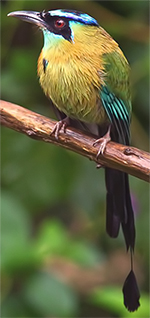 JUST ANNOUNCED!
JUST ANNOUNCED! 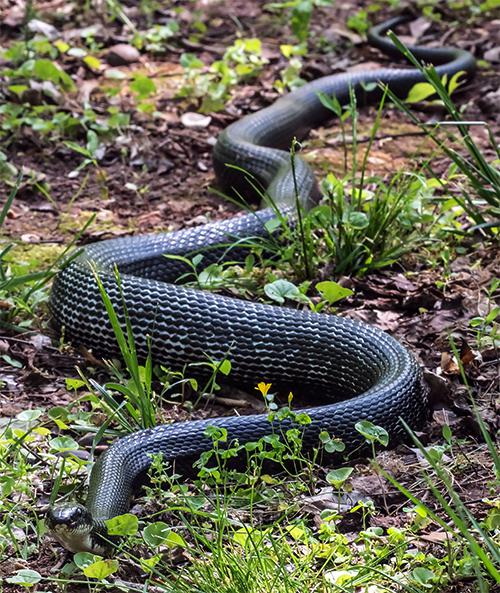

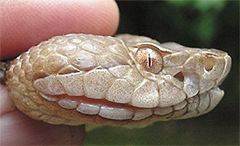 A close view of the Rat Snake
A close view of the Rat Snake 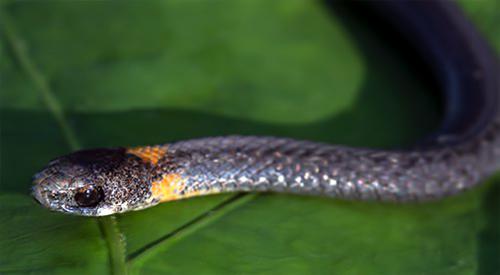
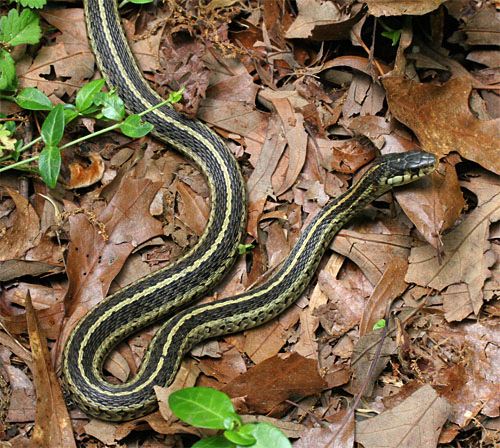
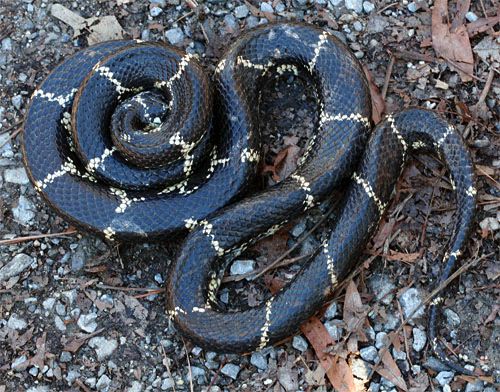
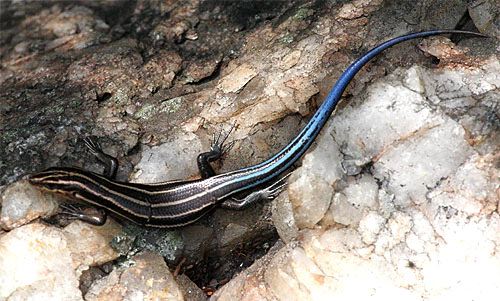

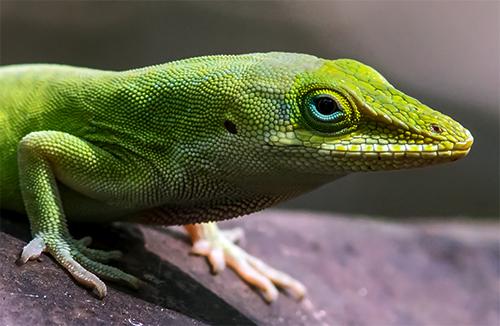
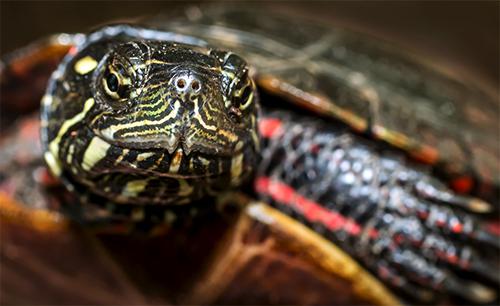

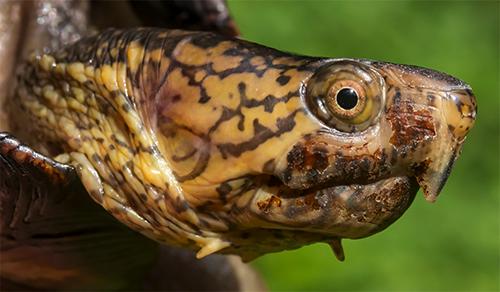
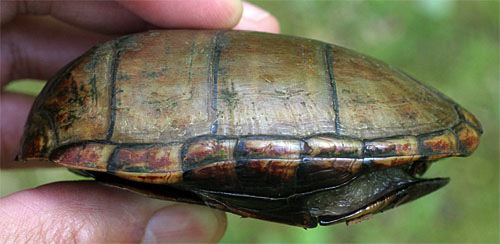
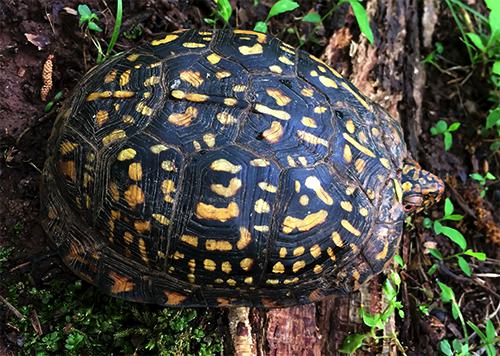
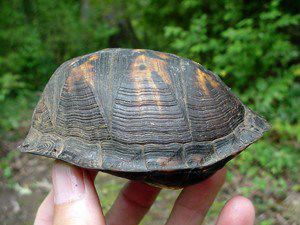 Like the Eastern Mud Turtle, a box turtle has a hinged plastron that allows it to withdraw all appendages inside its shell, providing a nearly impenetrable fortress
Like the Eastern Mud Turtle, a box turtle has a hinged plastron that allows it to withdraw all appendages inside its shell, providing a nearly impenetrable fortress 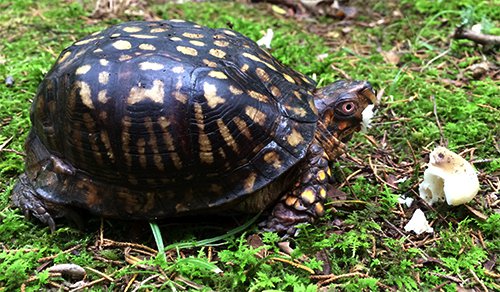









 Please report your
Please report your